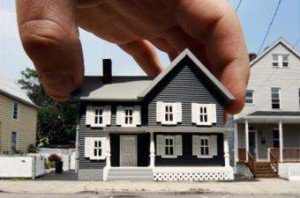 First American Financial Corporation has released its First American Real House Price Index (RHPI) for May 2020. According to the report—which measures the price changes of single-family properties throughout the nation, adjusted for the impact of income and interest rate changes on consumer house-buying power over time at national, state, and metropolitan area levels—the gap in supply and demand that plagued the pre-pandemic home market has only grown.
First American Financial Corporation has released its First American Real House Price Index (RHPI) for May 2020. According to the report—which measures the price changes of single-family properties throughout the nation, adjusted for the impact of income and interest rate changes on consumer house-buying power over time at national, state, and metropolitan area levels—the gap in supply and demand that plagued the pre-pandemic home market has only grown.
What is even more newsworthy, experts expect that this imbalance between supply and demand will only grow, alongside increasing house prices. First American Chief Economist Mark Fleming suggests that—and at least through the summer season—home prices will remain robust.
According to the RHPI:
- Real house prices decreased 0.3% between April 2020 and May 2020.
- Real house prices declined 7.3% between May 2019 and May 2020.
- Consumer house-buying power, how much one can buy based on changes in income and interest rates, increased 1.3% between April 2020 and May 2020, and increased 15.9% year-over-year.
- Median household income has increased 4.5% since May 2019 and 62.8% since January 2000.
- Real house prices are 21.8% less expensive than in January 2000.
- While unadjusted house prices are now 12.5% above the housing boom peak in 2006, real house-buying power-adjusted house prices remain 44.5% below their 2006 housing boom peak.
Fleming explained his reasoning behind this forecast: “Mortgage rates were falling before the pandemic, and just last week they fell below 3% for the first time ever. Demographic demand from millennials aging into their prime homeownership years continues to benefit housing as well. Both of these dynamics help boost demand.”
The resiliency of housing amid the devastation of other industries due to the outbreak of COVID-19 has been attributed by experts to a few key factors, including the presence of low mortgage rates and strong millennial demand.
“As the coronavirus pandemic continues to wreak havoc on global and domestic economies, housing has thus far proven resilient, managing a V-shaped recovery from the low point reached in April," Fleming said. "The strong rebound is largely a result of two dynamics that existed before the pandemic and have continued or even gained strength in the last few months.”
He continued: “Mortgage rates were falling before the pandemic, and just last week they fell below 3% for the first time ever. Demographic demand from millennials aging into their prime homeownership years continues to benefit housing as well. Both of these dynamics help boost demand.”
Yet another factor pointed out by Fleming was the increased demand in an already tight market. “An already tight inventory of homes has now reached record low levels and continues to move lower," he said. "The housing market amid the pandemic faces a significant supply and demand imbalance, and the result is accelerating price appreciation. In fact, based on current trends, we expect house price appreciation nationally to remain strong, and even accelerate in many markets this summer.”
The RHPI reports that the five states that experienced the greatest year-over-year increases were Vermont (+6.7%), Oklahoma (+3.7%), Montana (+3.5%), Texas (+3.2%), and Georgia (+2.8%). In addition, the five states with the greatest year-over-year decrease included Louisiana (-11.5%), New Hampshire (-9.5%), West Virginia (-9.3%), South Dakota (-7.7%), and New Jersey (-7.5%).

 theMReport.com Your trusted source for mortgage banking news
theMReport.com Your trusted source for mortgage banking news









